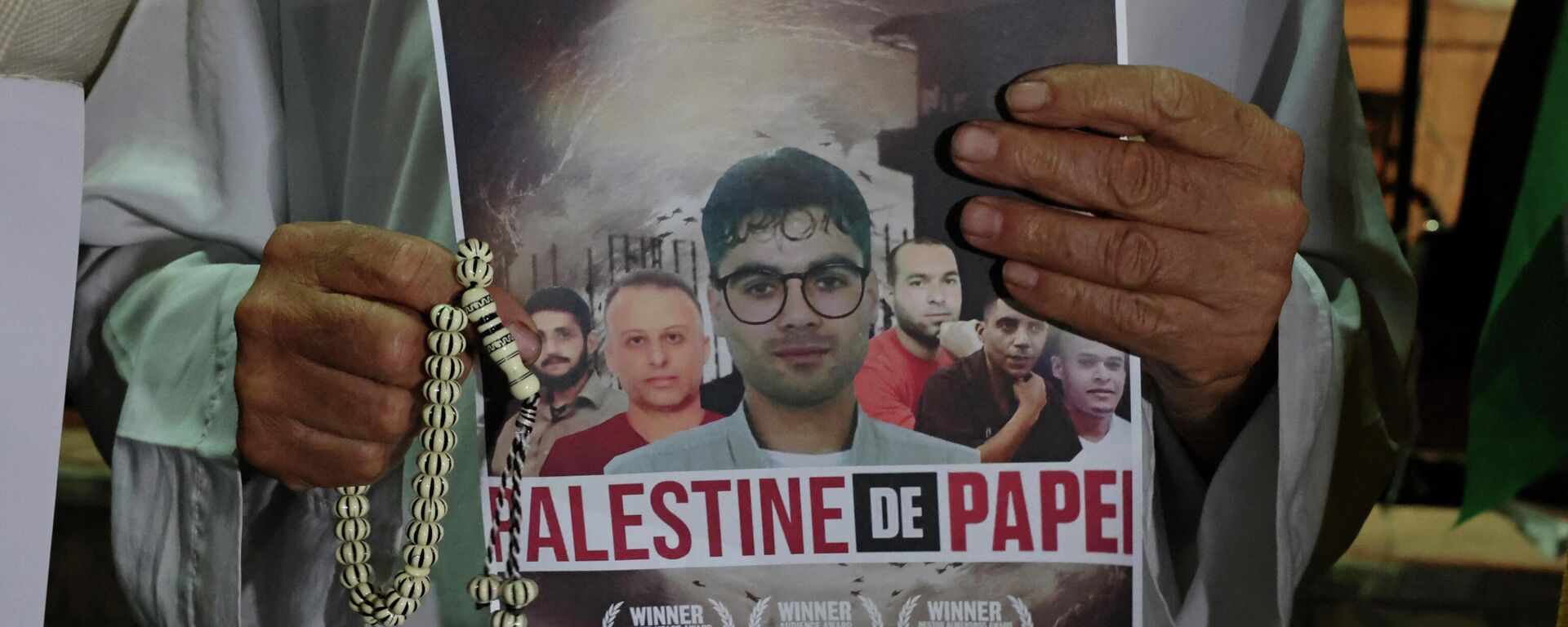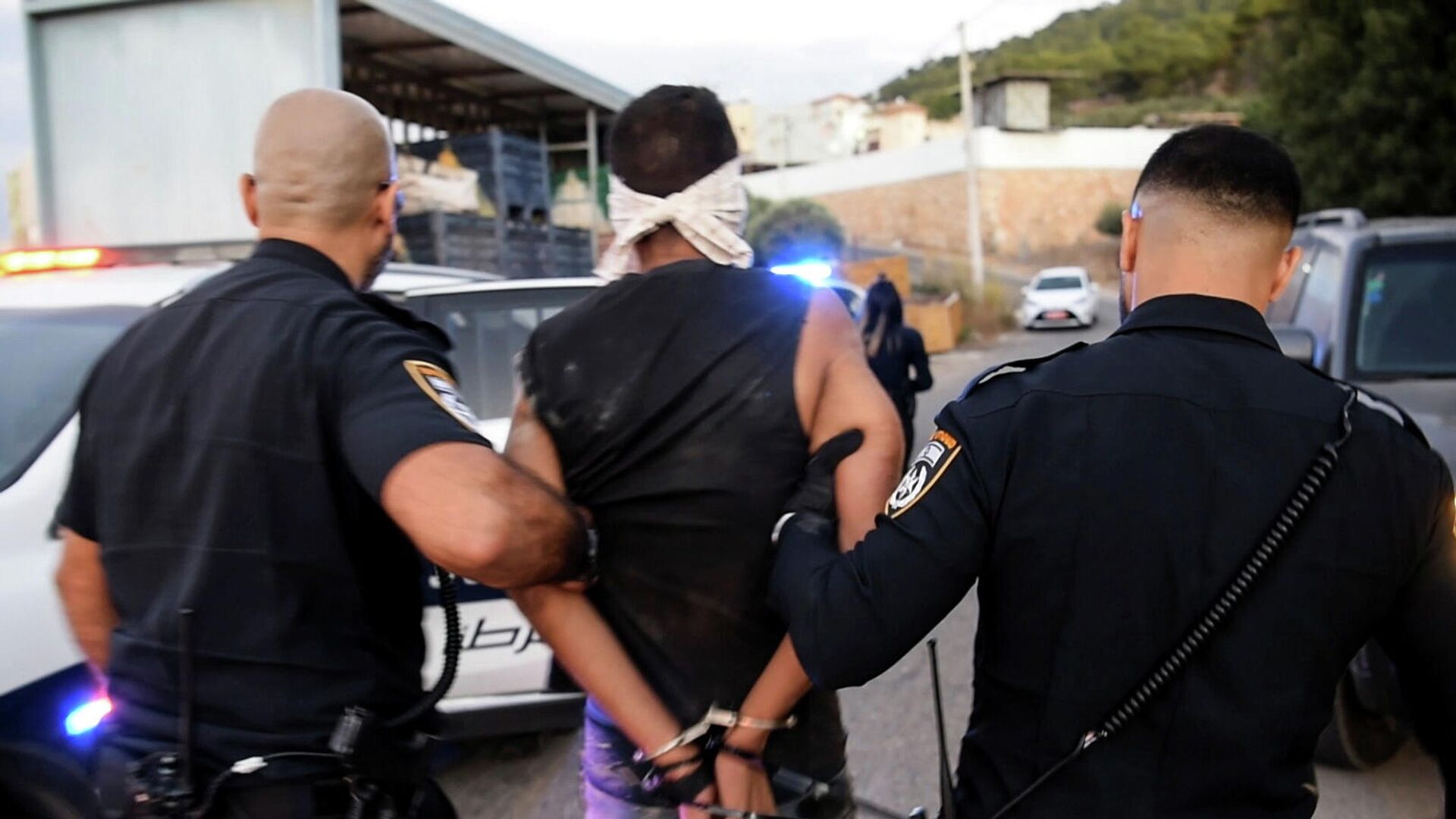https://sputnikglobe.com/20210911/escape-from-israels-most-guarded-prison-was-possible-due-to-9-mistakes-here-they-are-1088973452.html
Escape From Israel's Most Guarded Prison Was Possible Due to 9 Mistakes, Here They Are
Escape From Israel's Most Guarded Prison Was Possible Due to 9 Mistakes, Here They Are
Sputnik International
The probe into the country's most notorious jailbreak has yet to kick off, but some failures have already been highlighted by Israeli media. These included a... 11.09.2021, Sputnik International
2021-09-11T07:16+0000
2021-09-11T07:16+0000
2021-09-11T07:19+0000
israel
probe
prisoners
prison
palestinians
https://cdn1.img.sputnikglobe.com/img/07e5/09/0b/1088975298_0:0:1620:912_1920x0_80_0_0_e9d82418a722f8d9b5a1c3d2379f22fc.jpg
Four out of the six Palestinian prisoners who escaped from the Gilboa prison in northern Israel have been caught. The hunt for the remaining two continues.Minister of Public Security Minister Omer Bar Lev has already stated that he would open a probe into the prison break that has attracted much local and international media attention. He has also promised to "turn every stone" in order to understand what went wrong, and how the escape was made possible.For now, Israeli authorities are still scratching their heads over how the six escaped from the most secure Israeli prison but local media says there was too much negligence around that incident and that the writing has long been on the wall.Fatal MistakesHere are the main nine mistakes made by Israel that enabled the six Palestinians, all of whom had been charged with terrorism activity, to escape.1. In 2014, three out of the six escapees attempted an escape. At the time, they were being kept in the same cell and used the same method -- digging a tunnel that was hidden under one of the bathroom tiles. They were eventually caught, but jail authorities failed to treat the hole they had dug. The inmates were punished but they were not separated.2. According to prison regulations, inmates are supposed to be shuffled around once every six months. That is done in order to prevent them from bonding but in the case of the six, that measure was not implemented.3. The prisoners dug a tunnel that was 21 to 25 metres long. How did they know the direction it should be taken? And how did they figure out where the exit should be? Reports suggest that the answers to these questions they found online, as a detailed plan of the Gilboa prison was publicly available on the website of the architectural office that designed and built the jail.4. A week before the escape, Zakaria Zubeidi, a Palestinian inmate from Fatah, asked the prison authorities to move him into a cell together with the five inmates that belonged to a radical group, the Islamic Jihad. Normally, convicts stick together according to their affiliation and the fact that such a request was submitted should have rang an alarm. But it didn't and the transfer was made, resulting in the escape.5. On the night of the escape, a female warden who was stationed at the watch tower fell asleep. On Friday, after she gave her testimony, she even admitted that she heard noises but ignored them and continued sleeping. In addition, another tower that's observing the area of the tunnel's exit was not manned, and authorities say it was because of "staffing issues".6. The Gilboa prison has a control room with multiple monitors. On the night of the escape, the room was manned but the wardens were not watching the screens.7. A year ago, the prison has purchased an advanced taping system that aimed at listening to the conversations of the inmates and fish suspicious content. It was also aimed at blocking dangerous conversations. But it turned out that it has never been activated and that enabled the six prisoners to carry out their operation and even get in touch with a car that has been waiting for them.8. Prisoners know that the Shabak, or Israel's internal spy agency, is watching them. They also know that the prison authorities are watching them from up close. But in the case of the six fugitives those bodies have failed to collect the much-needed intelligence that would prevent their escape.9. Shortly before the jailbreak, the prison changed its phone numbers but it forgot to update the local police station. On the night of the escape, a cab driver that passed in the vicinity of the jail noticed three suspicious men, who were wearing a brown uniform (associated with security prisoners). He alerted the police, which in return tried to reach out to the prison authorities but they failed to do so. As a result, precious time has been wasted.Questions That Still Need to Be AnsweredThere are many other questions that beg to be answered. It is not clear, with which tools the inmates dag the tunnel, where did they throw the soil and how come the sound of digging was not even heard.It is also not clear, whether the six Palestinians have received assistance from within the prison. Evidence indicates that it was indeed the case. The probe that is soon to kick off is bound to find out.
https://sputnikglobe.com/20210909/prison-break-as-israel-continues-manhunt-for-6-palestinian-fugitives-heres-how-they-escaped-1088906890.html
israel
Sputnik International
feedback@sputniknews.com
+74956456601
MIA „Rossiya Segodnya“
2021
News
en_EN
Sputnik International
feedback@sputniknews.com
+74956456601
MIA „Rossiya Segodnya“
Sputnik International
feedback@sputniknews.com
+74956456601
MIA „Rossiya Segodnya“
israel, probe, prisoners, prison, palestinians
israel, probe, prisoners, prison, palestinians
Escape From Israel's Most Guarded Prison Was Possible Due to 9 Mistakes, Here They Are
07:16 GMT 11.09.2021 (Updated: 07:19 GMT 11.09.2021) The probe into the country's most notorious jailbreak has yet to kick off, but some failures have already been highlighted by Israeli media. These included a warden that fell asleep despite the noise and the decision to keep the six inmates, some of whom had already attempted an escape, together.
Four out of the six Palestinian prisoners who escaped from the Gilboa prison in northern Israel have been caught. The hunt for the remaining two continues.
Minister of Public Security Minister Omer Bar Lev has already stated that he would open a probe into the prison break that has attracted much local and international media attention. He has also promised to "turn every stone" in order to understand what went wrong, and how the escape was
made possible.
For now, Israeli authorities are still scratching their heads over how the six escaped from the most secure Israeli prison but local media says there was too much negligence around that incident and that the writing has long been on the wall.
Here are the main nine mistakes made by Israel that enabled the six Palestinians, all of whom had been charged with terrorism activity, to escape.
1. In 2014, three out of the six escapees attempted an escape. At the time, they were being kept in the same cell and used the same method -- digging a tunnel that was hidden under one of the bathroom tiles. They were eventually caught, but jail authorities failed to treat the hole they had dug. The inmates were punished but they were not separated.
2. According to prison regulations, inmates are supposed to be shuffled around once every six months. That is done in order to prevent them from bonding but in the case of the six, that measure was not implemented.

9 September 2021, 10:06 GMT
3. The prisoners dug a tunnel that was 21 to 25 metres long. How did they know the direction it should be taken? And how did they figure out where the exit should be? Reports suggest that the answers to these questions they found online, as a detailed plan of the Gilboa prison was publicly available on the website of the architectural office that designed and
built the jail.
4. A week before the escape, Zakaria Zubeidi, a Palestinian inmate from Fatah, asked the prison authorities to move him into a cell together with the five inmates that belonged to a radical group, the Islamic Jihad. Normally, convicts stick together according to their affiliation and the fact that such a request was submitted should have rang an alarm. But it didn't and the transfer was made, resulting in the escape.
5. On the night of the escape, a female warden who was stationed at the watch tower fell asleep. On Friday, after she gave her testimony, she even admitted that she heard noises but ignored them and continued sleeping. In addition, another tower that's observing the area of the tunnel's exit was not manned, and
authorities say it was because of "
staffing issues".
6. The Gilboa prison has a control room with multiple monitors. On the night of the escape, the room was manned but the wardens were not watching the screens.
7. A year ago, the prison has purchased an advanced taping system that aimed at listening to the conversations of the inmates and fish suspicious content. It was also aimed at blocking dangerous conversations. But it turned out that it has never been activated and that enabled the six prisoners to carry out their operation and even get in touch with a car that has been waiting for them.
8. Prisoners know that the Shabak, or Israel's internal spy agency, is watching them. They also know that the prison authorities are watching them from up close. But in the case of the six fugitives those bodies have failed to collect the much-needed intelligence that would prevent their escape.
9. Shortly before the jailbreak, the prison changed its phone numbers but it forgot to update the local police station. On the night of the escape, a cab driver that passed in the vicinity of the jail noticed three suspicious men, who were wearing a brown uniform (associated with security prisoners). He alerted the police, which in return tried to reach out to the prison authorities but they failed to do so. As a result, precious time has been wasted.
Questions That Still Need to Be Answered
There are many other questions that beg to be answered. It is not clear, with which tools the inmates dag the tunnel, where did they throw the soil and how come the sound of digging was not even heard.
It is also not clear, whether the six Palestinians have received assistance from within the prison. Evidence indicates that it was indeed the case. The probe that is soon to kick off is bound to find out.


